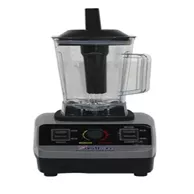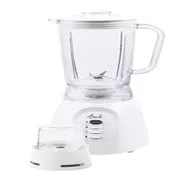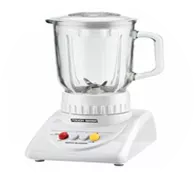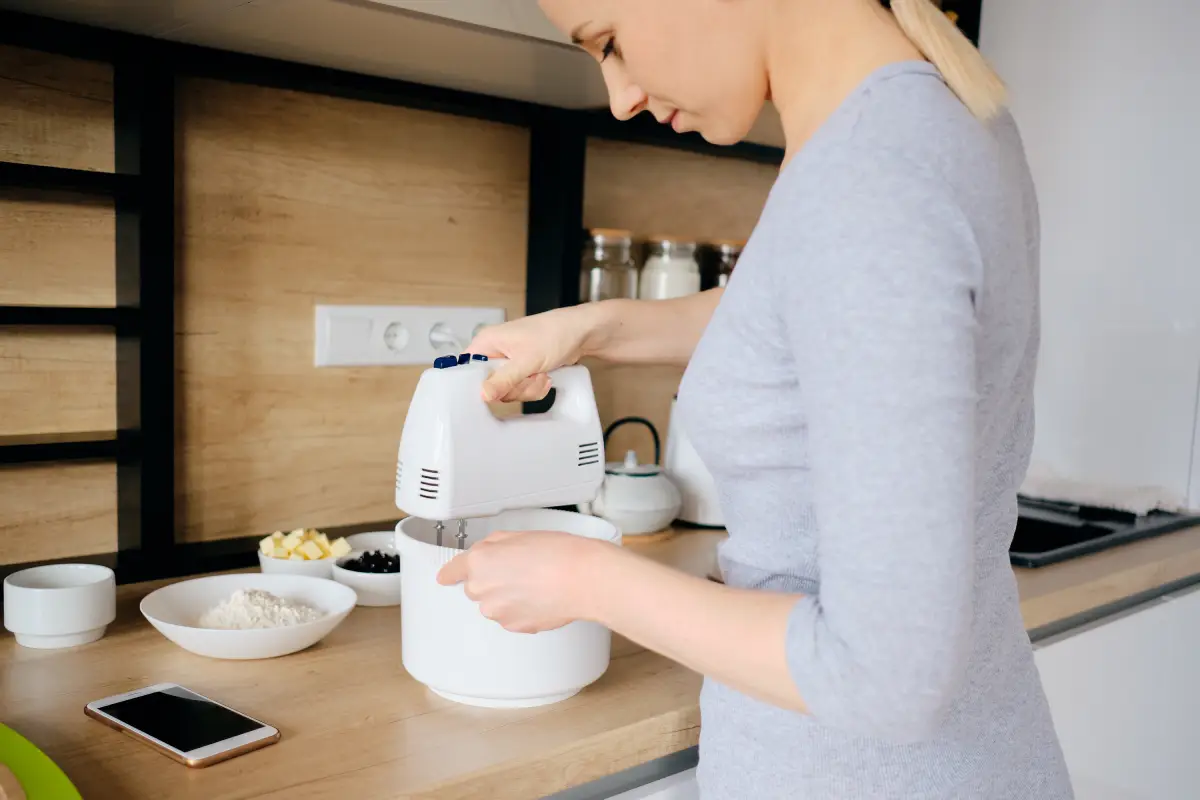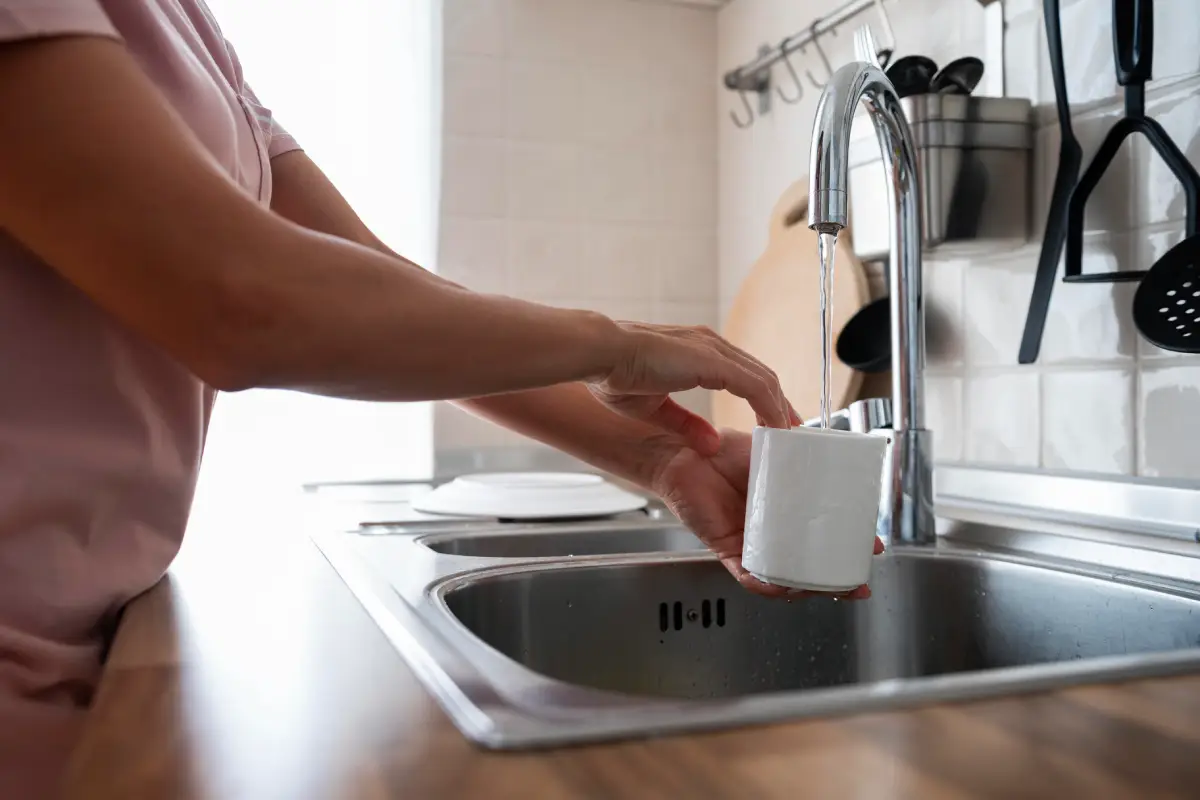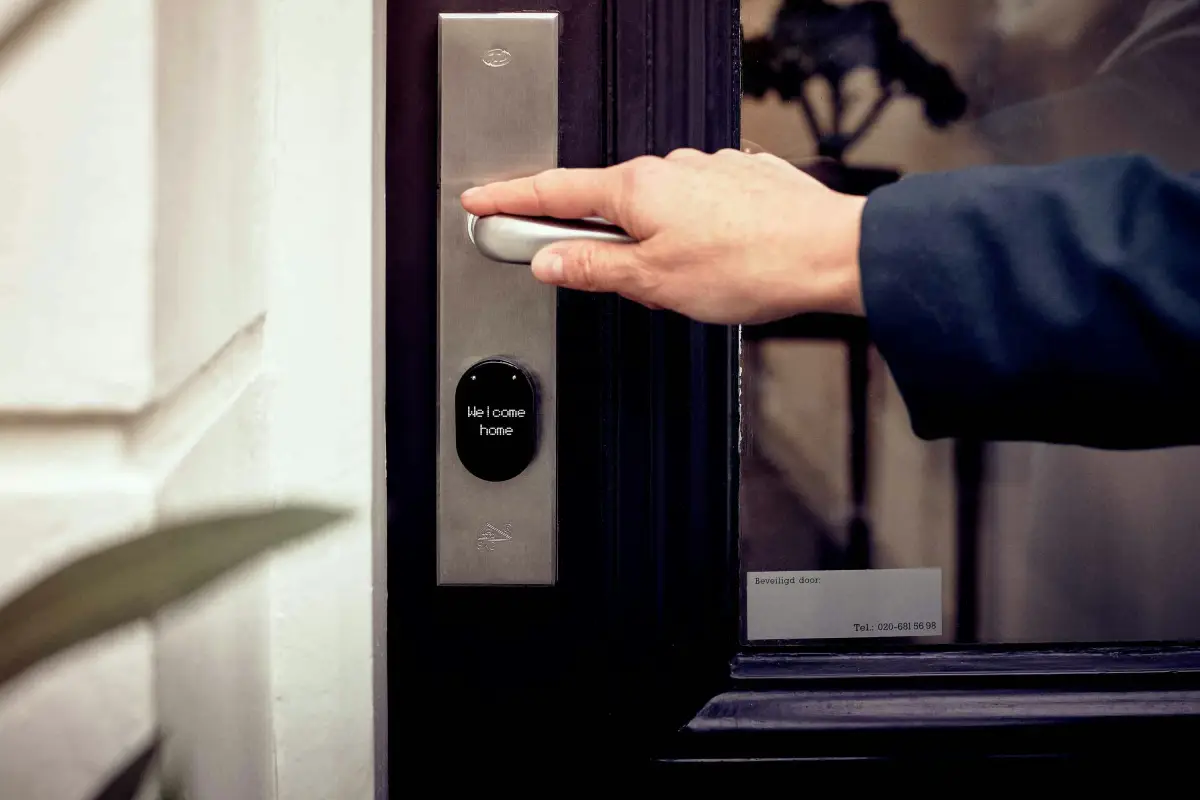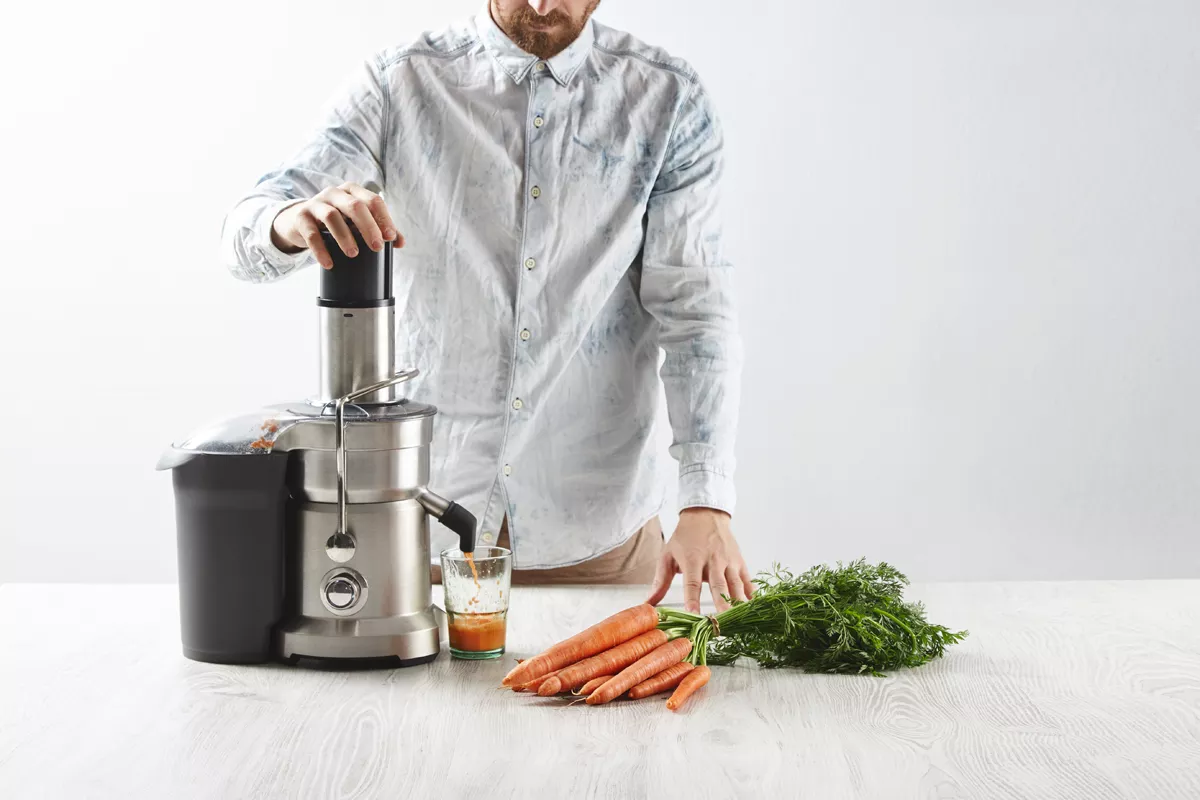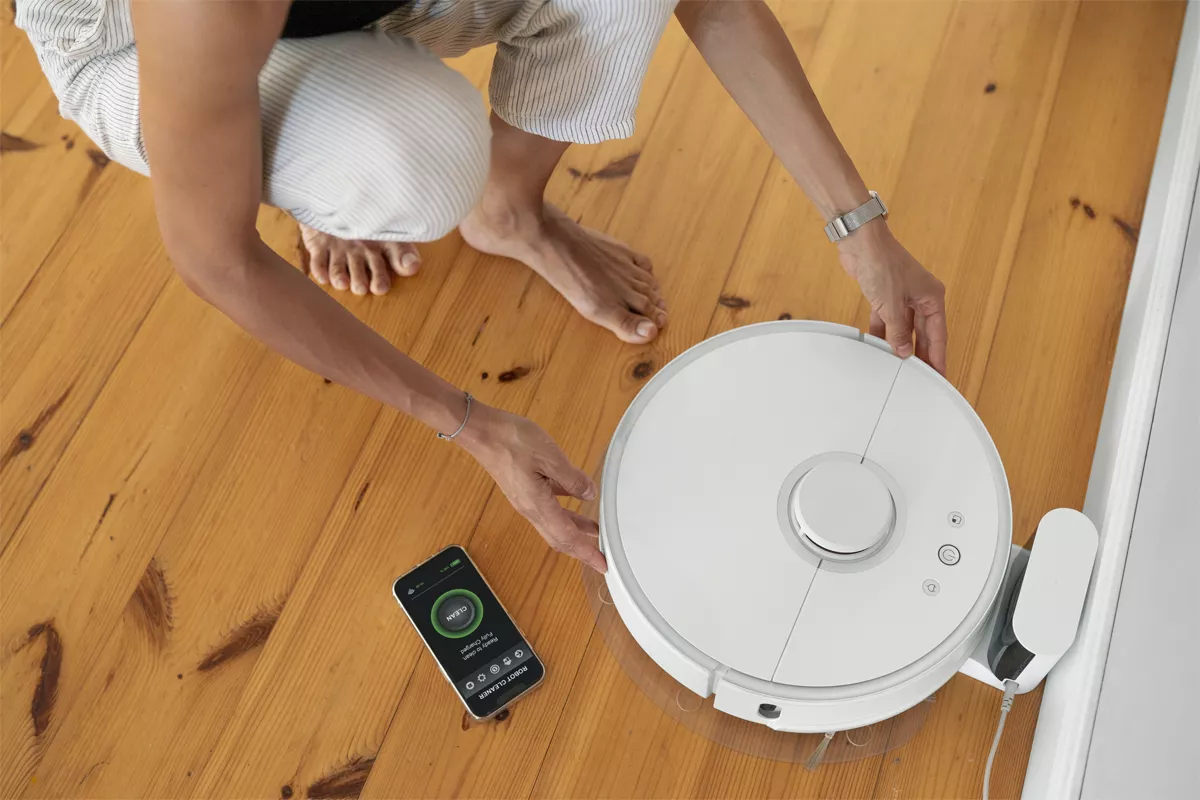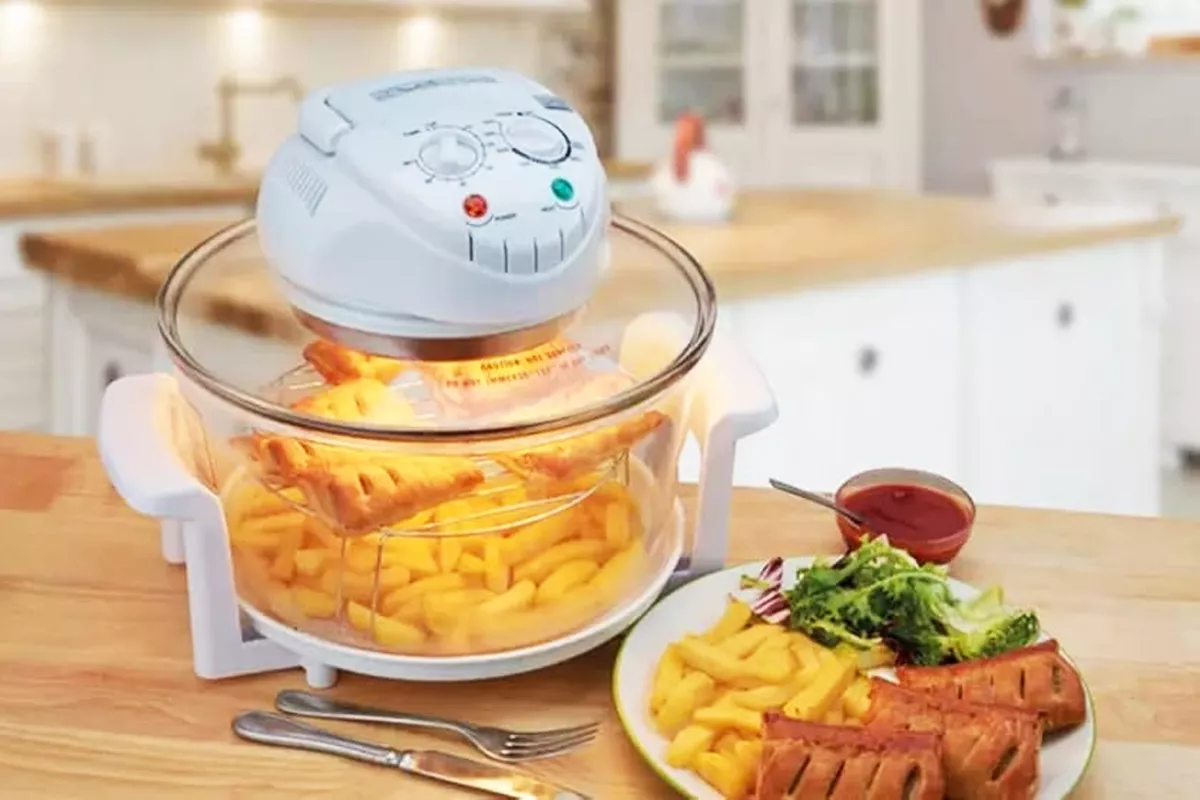Blenders in the Philippines have become indispensable kitchen companions for households across the country. Whether you’re into whipping up healthy smoothies, preparing delicious sauces, or crushing ice for refreshing beverages, a reliable blender is a must-have. In this comprehensive guide, we’ll delve into the world of blenders, specifically tailored to the needs of Filipinos. From choosing the right blender to exploring innovative recipes, we’ve got you covered.
Best High-Performance
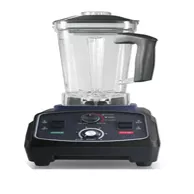
BioloMix 3HP 2200W Heavy Duty Commercial Grade Timer Blender
When it comes to finding the best blenders in the Philippines, it’s important to consider your specific needs. Whether you’re a smoothie enthusiast, a home chef, or simply looking for a versatile kitchen appliance, there are options for everyone. In this guide, we’ll explore some of the top blender brands and models that you can find in the Philippines.
Table of Contents
ToggleWhy Blenders in the Philippines Matter
Filipino cuisine is known for its rich and diverse flavors. From adobo to sinigang, Filipino dishes offer a spectrum of tastes and textures. Blenders play a pivotal role in achieving the perfect consistency and flavor in many of these recipes. Here are some key reasons why blenders are essential in the Philippines:
Versatility
Blenders are versatile kitchen appliances that can handle a wide range of tasks. They can be used to create traditional Filipino dishes, prepare refreshing beverages, and even whip up healthy smoothies. This versatility makes them indispensable for home cooks.
Texture and Flavor
Many Filipino dishes rely on the perfect blending of ingredients to achieve the desired texture and flavor. Blenders ensure that everything is mixed thoroughly and uniformly, resulting in delicious and authentic dishes.
Efficiency
Blenders make cooking more efficient. They can quickly puree vegetables for soups, create smooth sauces for dipping, and even crush ice for cooling drinks. In the hustle and bustle of Filipino kitchens, having a reliable blender streamlines the cooking process.
Healthy Living
With the growing focus on health and wellness, blenders have become vital for those looking to incorporate more fruits and vegetables into their diets. Smoothies and shakes are a convenient and tasty way to consume nutritious ingredients, and blenders make this process easy.
Modern Innovations
Blenders have evolved over the years, with modern innovations such as high-performance motors and durable blades. These advancements ensure that blenders can handle the demands of Filipino cooking, which often involves blending tough ingredients.
Review of the Best Blenders in the Philippines
1. Asahi BL 912 Blender
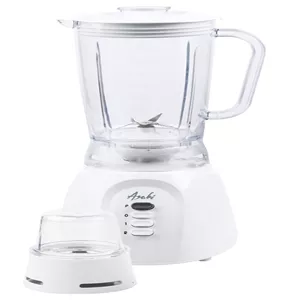
Best Full-size Blender
The Asahi BL 912 Blender is a great choice because of its impressive features. Its big capacity and safety feature, the thermal fuse, are clear advantages. Additionally, the stainless steel blades and a 1-year warranty make it even better.
Key Features:
- Two-speed settings and a pulse function
- Large capacity for blending
- Includes a free dry mill
- Equipped with a thermal fuse
- Stainless steel blades
- Comes with 1-year warranty
2. Astron Ice Power Heavy Duty Ice-Crushing Blender

Shopee’s Choice
The Astron Ice Power Heavy Duty Ice-Crushing Blender is a robust, multi-purpose appliance that excels at crushing ice, blending, and food processing, enabling you to whip up restaurant-grade frozen treats in the comfort of your own kitchen.
Pros:
- Powerful motor for efficient ice crushing and blending
- Spacious container
- All-in-one design for versatile use
Cons:
- More expensive compared to alternative blenders or ice crushers
- Too powerful for simple blending tasks
3. Barista Brothers High Performance Commercial Blender

The Barista Brothers High Performance Commercial Blender stands as a robust blending solution tailored for commercial applications, including usage in cafes, eateries, and smoothie establishments.
Pros:
- Large Capacity
- Versatile 12-Speed Options
- Durable Titanium Blades
- User-Friendly Operation and Cleaning
- High-Powered Motor
Cons:
- Too powerful for home use
- More expensive compared to other blenders
4. BioloMix 3HP 2200W Heavy Duty Commercial Grade Timer Blender
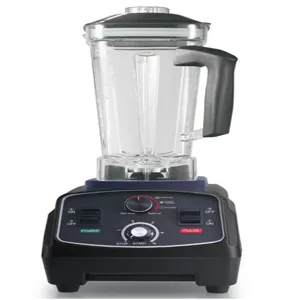
Best High-Performance Blender
The BioloMix 3HP 2200W Heavy Duty Commercial Grade Timer Blender is a robust blending machine created for commercial purposes. It includes an extended warranty for the motor, making it ideal for commercial settings.
Pros:
- Powerful motor
- Large capacity
- Automated overheating safety function
- 1-year warranty covering all components and accessories
Cons:
- Produces noise during operation
5. Hanabishi Juice Blender HJB327
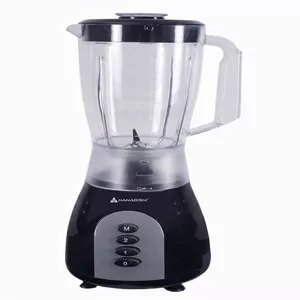
The Hanabishi Juice Blender HJB327 is a special blender created to whip up delicious juice and other blended drinks. It boasts a robust motor that effortlessly blends fruits, veggies, and ice, ensuring your drinks are smooth and tasty.
Pros:
- Large capacity jar
- Comes with two speed options and pulse function
- Equipped with sturdy stainless steel blades
- Includes a thermal fuse protector
- Features safety locks
Cons:
- Noisy when operating at high speeds
6. Imarflex Multi-blender IB-560G
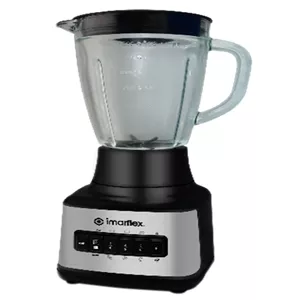
The Imarflex Multi-blender IB-560G serves as a versatile kitchen tool, capable of blending, mixing, and grinding tasks. It is equipped with a glass jar for added durability, overload protection for safety, and anti-slip footing to prevent accidents.
Pros:
- Six-speed settings with a pulse function
- Features a four-angled stainless steel blade
- Equipped with a powerful motor
- Includes a safety switch
Cons:
- Not ideal for large families or commercial use
- Noisy when operating at high speeds
7. JTC OmniBlend V Blender TM 800
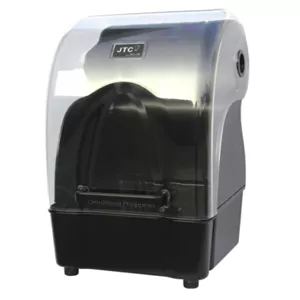
Best Countertop Blender
The JTC OmniBlend V Blender TM-800A is a versatile blender suitable for both household and business purposes. It boasts various speed options, is dishwasher-safe, and features a noise-reducing sound shield.
Key Features:
- Sturdy and versatile
- Exceptionally efficient motor
- User-friendly
- Affordable
- Convenient one-touch auto timer
8. Kyowa Heavy Duty Blender KW-4765
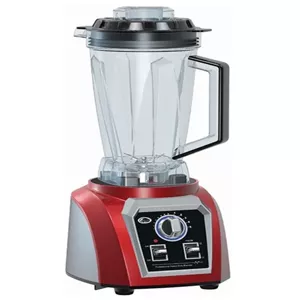
Most Reliable Blender
The Kyowa Heavy Duty Blender KW-4765 is purpose-built for demanding blending tasks. With its capacious pitcher and robust blades, it excels at effortlessly blending even the most stubborn ingredients.
Pros:
- Variable low to high rotary speed control
- With Pulse Control Switch
- Features a safety switch
- With anti-slip rubber
Cons:
- Not as durable as other materials
- Lacks an array of advanced features
9. Philips Promix Hand Blender Hr2520/00 400W
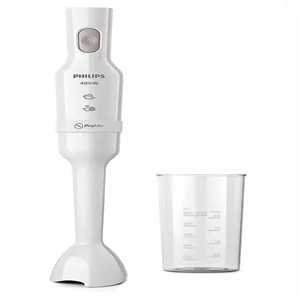
The Philips Promix Hand Blender HR2520/00 400W stands as a robust and effective hand blender, capable of swiftly mixing your preferred ingredients through its ProMix advanced blending technology.
Pros:
- Powerful motor
- Anti-splash feature
- Comfortable slip-free ergonomic grip
- Sleek and lightweight design
Cons:
- Hand blender are a bit heavy
- Does not come with a lot of attachments
10. TEFAL Fruit Sensation Glass Blender
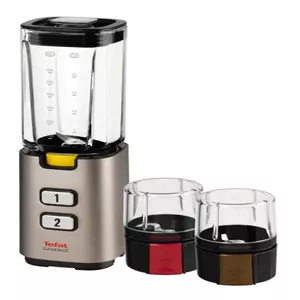
The TEFAL Fruit Sensation Glass Blender is a small yet mighty blending tool that comes with useful extras to help you savor the flavors and textures of fruits and veggies.
Pros:
- Compact design
- Energy efficient
- Equipped with four blades
Cons:
- Has difficulties when crushing ice
11. Tough Mama NTMBG-3 WHITE Glass Blender
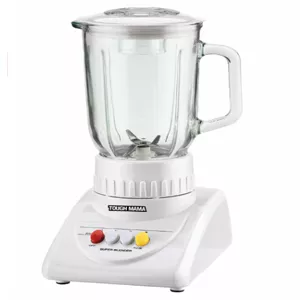
Most Affordable Blender
The Tough Mama NTMBG-3 WHITE Glass Blender is a blender designed for home use. It features a 1.25L glass container with blades that can be detached, making it a breeze to clean. This blender comes with a 2-speed setting and a pulse button, and it’s equipped with stable rubber feet to ensure reliability and performance.
Pros:
- Strong and durable glass jar
- Unique metal-to-metal drive shaft
- The blades are easy to clean
Cons:
- Not suitable for heavy-duty blending tasks
Different Types of Blenders
Blenders come in various types, each designed to cater to different needs and preferences. Whether you’re a smoothie enthusiast, a culinary adventurer, or someone looking for a compact kitchen appliance, there’s a blender for you. Let’s dive into the different types of blenders:
Countertop Blenders
Countertop blenders are the most common type and are known for their versatility. They are equipped with a sturdy base and a large blending jar. These blenders are suitable for a wide range of tasks, from making smoothies and shakes to blending soups and pureeing vegetables. They often come with multiple speed settings and various blending options, making them a go-to choice for many home cooks.
Personal Blenders
Personal blenders are compact and designed for individuals or small households. They are perfect for those on the go, as you can blend your ingredients directly in a portable cup. These blenders are easy to use and are often more affordable than their larger counterparts. They are excellent for making single-serving smoothies and shakes.
High-Performance Blenders
High-performance blenders are for those who take their blending seriously. These blenders are equipped with powerful motors and durable blades, capable of handling tough ingredients like frozen fruits and ice. They are designed for more demanding tasks, such as making nut butter, crushing ice for cocktails, or even grinding grains for baking. These blenders are built to last and are a favorite among serious home chefs.
Immersion Blenders
Immersion blenders, also known as hand blenders or stick blenders, are handheld devices that allow you to blend directly in the pot or container. They are convenient for tasks like pureeing soups, making sauces, or blending small batches of smoothies. Immersion blenders are easy to clean and store, making them a popular choice for those with limited kitchen space.
Commercial Blenders
Commercial blenders are designed for heavy-duty use and are commonly found in restaurants and professional kitchens. They are built to handle high volumes of blending and are equipped with robust motors and large-capacity jars. These blenders are ideal for businesses that require consistent and efficient blending.
Features to Look for in Blenders
When you’re in the market for a blender, it’s important to consider several features to ensure that you select the one that best suits your needs. Here are some essential features to look for:
Motor Power
The motor is the heart of a blender, and its power directly affects the blender’s performance. For tasks like crushing ice, grinding tough ingredients, and blending dense mixtures, a blender with a strong motor is crucial. Look for blenders with at least 500 watts of power for versatile and efficient blending.
Blade Material
Blade material is another important factor. Stainless steel blades are durable, sharp, and resistant to corrosion. They are ideal for chopping, blending, and grinding various ingredients. High-quality blades ensure smooth and consistent results.
Jar Material
Blenders typically come with jars made of either glass or plastic. Glass jars are heavy and less likely to absorb odors or stains, making them a good choice for long-term use. Plastic jars are lighter and more durable but may stain over time. Choose the jar material that aligns with your preferences.
Speed Settings
Having variable speed settings on your blender provides more control over the blending process. It allows you to adjust the speed to match the consistency you desire for your recipes. Some blenders come with preset modes for specific tasks, which can be a convenient feature.
Pulse Function
The pulse function allows you to blend in short bursts, which is helpful for achieving the desired texture without over-processing. It’s particularly useful for tasks like making salsas, chopping vegetables, or mixing batter.
Size and Capacity
Consider the size and capacity of the blender. If you have limited kitchen space, a compact blender might be more suitable. Larger families or those who frequently prepare large batches of recipes may prefer blenders with larger jars.
Safety Features
Safety is paramount. Look for blenders with safety features like interlocking systems that prevent the blender from operating unless the jar is securely in place. This reduces the risk of accidents.
Noise Level
Blender noise can vary significantly between models. If you’re concerned about noise, consider blenders with noise-reduction features or those that are specifically designed to operate quietly.
Easy to Clean
Blenders with removable blades and dishwasher-safe parts are easier to clean. Easy maintenance can save you time and effort in the long run.
Warranty
Check the warranty provided by the manufacturer. A longer warranty period indicates the manufacturer’s confidence in the product’s durability. It’s reassuring to have a warranty in case any issues arise.
How to Use a Blender
Using a blender is a straightforward process, and it can be a versatile tool in the kitchen for a variety of tasks. Here’s a general guide on how to use a blender effectively:
1. Assemble the Blender
- Place the blender base on a clean, dry, and stable surface.
- Ensure that the blender jar or container is clean and free from any residue from previous uses.
2. Add Ingredients
- Start by adding the ingredients you want to blend into the blender jar. For smoothies, this may include fruits, vegetables, yogurt, or any other desired components.
- When adding liquids, be sure not to overfill the jar. Leave some space to accommodate the expansion of ingredients as they blend.
3. Attach the Lid Securely
- Before you start blending, make sure the lid is securely attached to the jar. This prevents any splattering or spillage during the blending process.
4. Select the Appropriate Speed or Setting
- Most blenders have multiple speed settings or preset modes for specific tasks. Choose the setting that matches the consistency you want to achieve. For example, you might select a higher speed for ice crushing and a lower speed for smoothies.
5. Start Blending
- Turn on the blender using the designated button or switch. Hold the lid in place to ensure it doesn’t come loose during blending.
- Some blenders have a pulse function, which allows you to blend in short bursts. This is useful for achieving the desired texture without over-processing.
6. Monitor the Blending Process
- Keep an eye on the contents as they blend. If you notice any ingredients sticking to the sides of the jar, stop the blender and use a spatula to push them down. This ensures that all ingredients are blended evenly.
7. Blend to the Desired Consistency
- Continue blending until you achieve the desired consistency. The time it takes to reach the desired result depends on the ingredients and the selected speed.
8. Turn off the Blender
- Once you’re satisfied with the blend, turn off the blender and unplug it if necessary. Safety is essential.
9. Remove the Blender Jar
- Carefully remove the blender jar from the base. Be cautious, as the jar may be heavy, especially if it’s filled with a thick mixture.
10. Pour and Serve
- Carefully pour the blended mixture into a glass, container, or serving vessel. Enjoy your freshly prepared recipe, whether it’s a delicious smoothie, a savory sauce, or any other culinary creation.
11. Clean the Blender
- After use, it’s essential to clean the blender thoroughly. Disassemble the parts, and wash the jar, lid, and blades in warm, soapy water. Some blender parts may be dishwasher-safe, but always check the manufacturer’s instructions for cleaning guidance.
How to Clean and Maintain your Blender
Maintaining and cleaning your blender is essential to ensure its longevity and hygienic use. Here’s a guide on how to properly maintain and clean your blender:
1. Unplug and Disassemble
- Before you begin cleaning, unplug the blender to ensure safety.
- Disassemble the blender by removing the blender jar, lid, and any detachable parts like the gasket and blade assembly. Carefully handle the sharp blades.
2. Rinse Immediately
- To prevent residue from drying and becoming harder to clean, rinse the blender jar and lid with warm water immediately after use.
3. Prepare Warm, Soapy Water
- Fill the blender jar with warm water and add a few drops of dishwashing liquid. Alternatively, you can fill a large basin with soapy water.
4. Blend Soapy Water
- Place the blender jar back on the base, without the lid or any detachable parts. Start the blender and let it run for a minute or two. This action will help clean the inside of the jar.
5. Hand Wash Detachable Parts
- Remove the gasket, blade assembly, and any other detachable parts. Wash them by hand using warm, soapy water. Be cautious when handling the sharp blades.
- Use a brush or sponge to clean hard-to-reach areas, such as the blade assembly.
6. Rinse Thoroughly
- Rinse all parts with warm water to remove any soap residue. Ensure that no soap or food particles remain.
7. Dry Completely
- Allow all parts to air dry completely before reassembling the blender. This helps prevent mold or odors from developing.
8. Wipe the Base
- Use a damp cloth or sponge to clean the base of the blender, where the motor is located. Be cautious not to get the base wet as it may damage the electrical components. Wipe it dry if needed.
9. Reassemble the Blender
- Once all parts are clean and dry, reassemble the blender. Make sure the gasket is properly seated, and the blade assembly is secure.
10. Store Properly
- When not in use, store the blender with the lid off to allow air circulation and prevent odors from developing inside the jar.
- Keep the blender in a clean and dry area.
11. Regular Maintenance
- Periodically, inspect the blender for any signs of wear or damage, such as a cracked jar or loose blades. If you notice any issues, replace or repair the damaged parts promptly.
Safety Tips and Precautions
Blenders are powerful kitchen appliances that can make meal preparation convenient, but they also require careful handling to ensure your safety. Here are some important safety tips and precautions when using a blender:
1. Read the User Manual
Before using your blender, thoroughly read the user manual that comes with it. Understanding the manufacturer’s guidelines is crucial for safe operation.
2. Check Electrical Safety
Ensure that the blender’s power cord and plug are in good condition. Avoid using a blender with a damaged cord or plug, as it can be a safety hazard.
3. Keep Hands and Utensils Away
Never insert your hand or any utensils into the blender jar while it’s in operation. The blades can be extremely sharp and cause serious injury.
4. Secure the Lid
Always make sure the blender lid is securely in place before starting the blender. If your blender has a safety interlock, it may not operate unless the lid is properly locked.
5. Start Slowly
When you begin blending, start with the lowest speed setting. This prevents the contents from splattering and allows you to control the blending process.
6. Use Pulse Mode for Control
For precise blending and to avoid over-processing, use the pulse function in short bursts, especially when achieving specific textures.
7. Never Overfill
Avoid overfilling the blender jar, as this can lead to spillage or overpressure. Follow the manufacturer’s guidelines for maximum fill levels.
8. Add Liquids First
When making smoothies or recipes with liquids, add the liquid ingredients to the blender jar first. This helps prevent solid ingredients from getting stuck at the bottom.
9. Use Tamper Safely
If your blender includes a tamper, use it carefully to push ingredients down towards the blades while the blender is off or on the lowest speed setting. Do not use it when the blender is running at high speeds.
10. Avoid Hot Liquids
Be cautious when blending hot liquids. The heat can create pressure inside the jar, which may result in splattering or even the lid blowing off. Allow hot liquids to cool slightly before blending, and use the blender’s vent cap if available.
11. Clean Safely
When cleaning the blender, unplug it and handle the blades with care. They can be sharp and pose a risk of injury. Use a brush or sponge to clean the blade assembly and other parts.
12. Supervise Children
Keep children away from the blender while it’s in operation. Store the blender and its parts out of their reach.
13. Unplug After Use
After using the blender, unplug it from the electrical outlet. This prevents accidental activation.
14. Regular Maintenance
Periodically inspect the blender for any signs of wear or damage. Replace or repair any damaged parts to ensure safe operation.
Personal Insights and Recommendations
In my experience, finding the right blender can be quite a task. I remember a time when I was on the hunt for the perfect blender here in the Philippines. It was important to me because I love making smoothies for my family. My advice to anyone searching for the best blender is to consider your specific needs. Do you want it for simple shakes or heavy-duty blending? Think about how much space you have in your kitchen, too. And always read reviews from real users, just like I did. It’s the best way to make a choice that suits your lifestyle. Happy blending!
Frequently Asked Questions for Blenders
What are the best blenders for making traditional Filipino dishes?
For traditional Filipino recipes, countertop blenders with a sturdy motor and durable blades are your best bet.
Can I blend hot ingredients in my blender?
While some blenders are designed for hot ingredients, it’s essential to check the manufacturer’s guidelines. Countertop blenders are generally suitable for this purpose.
How often should I clean my blender?
Regular cleaning is crucial, especially if you use it frequently. Cleaning after each use is recommended to prevent residue buildup.
What’s the difference between blending and juicing?
Blending retains the fiber of fruits and vegetables, while juicing extracts the liquid, leaving the fiber behind. Blended drinks are thicker and more filling.
Are personal blenders suitable for making soups?
Personal blenders are ideal for smoothies and shakes but may not handle hot ingredients well. It’s best to opt for a countertop blender for soups.
Can I replace a food processor with a blender?
While blenders can handle many food processing tasks, they may not perform as efficiently as dedicated food processors for certain jobs.
Are blenders and food processors the same?
No, blenders are designed for liquids and softer foods, while food processors are better for chopping and slicing.
Can I blend hot liquids in a blender?
Yes, but be careful. Allow hot liquids to cool slightly before blending, and never fill the container to the top.
Can I blend frozen fruits and ice in a regular blender?
Yes, but it’s best to use a high-speed blender for smoother results.
Can I use a blender for baking purposes?
Yes, blenders can be used for mixing batters, making dough, and preparing various baking ingredients.
Conclusion
In conclusion, blenders have become indispensable kitchen companions for many households in the Philippines. They play a crucial role in preparing a wide range of dishes, from traditional Filipino recipes to trendy and healthy smoothies. When choosing the right blender, it’s essential to consider your specific needs and preferences.
Written By
With a solid foundation in family dynamics, child development, and a knack for assessing products, our content is built on a strong grasp of our topics. We use trustworthy sources, seek advice from experts, and stay current with the latest happenings in our fields. We always give credit to our sources, reveal any possible conflicts of interest, and deliver info in a truthful and unbiased way. Follow us on Facebook or join our Facebook Group.
Start your journey to confident parenting
Join over 2,000+ parents who receive free practical advice and tips from Joyful PH. Unsubscribe anytime.
You may also like
11 Best Stand Mixers in the Philippines
Choosing the right stand mixer can transform your baking routine, from whipping…
11 Best Water Purifiers in the Philippines
Accessing truly clean drinking water is a critical need in the Philippines.…
11 Best Smart Door Locks in the Philippines
Discover the 11 best smart door locks available in the Philippines today,…
11 Best Food Processors in the Philippines
Discover the top food processors available in the Philippines—versatile…
11 Best Robot Vacuum Cleaners in the Philippines
Looking to simplify your cleaning routine? Robot vacuum cleaners have become…
11 Best Turbo Broilers in the Philippines
Turbo broilers have become a kitchen staple in many Filipino homes, offering a…


